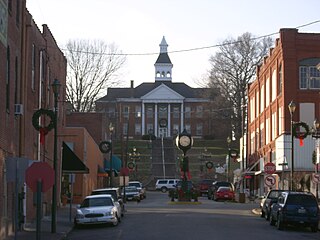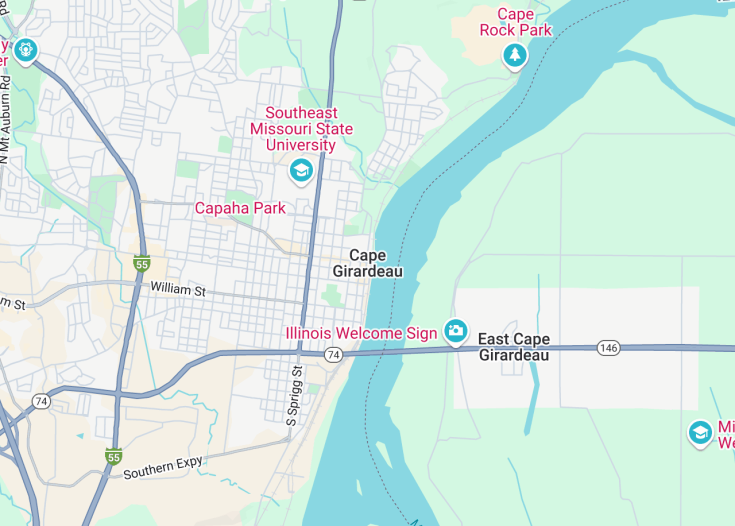Nestled along the western bank of the mighty Mississippi River, Cape Girardeau, Missouri, is a charming city bursting with history and natural beauty. Known for its vibrant arts scene, rich architectural heritage, and picturesque parks, Cape Girardeau offers a unique blend of cultural and outdoor activities. The city’s downtown area, with its array of shops, restaurants, and galleries, alongside historic sites like the Red House Interpretive Center, provides visitors a glimpse into the region’s past and present.
Don’t miss visiting the Cape Girardeau Conservation Nature Center for a truly immersive nature experience with its walking trails and interactive exhibits.
Plan your visit in the fall to experience the vibrant colors of the season and enjoy the annual Cape Girardeau Heritage Days, which showcases the city’s rich history and culture.
Top things to do & see in Cape Girardeau
Select the following sights and activities to discover best tickets and tours available in Cape Girardeau.
Cape Girardeau: A Gem on the Mississippi
| Country | Missouri (USA) |
| Time in Cape Girardeau | GMT-6 |
| Language spoken | English |
| Population | 39,540 (U.S. Census Bureau, 2020) |
| Currency | United States Dollar (USD $) |
| Airports | Cape Girardeau Regional Airport (5 mi / 8 km) |
Cape Girardeau, Missouri, is not only rich in history but also vibrates with culture and commerce. Nestled along the western bank of the mighty Mississippi River, this city serves as a hub of higher education and healthcare, with Southeast Missouri State University adding to its vibrant community feel. Cape Girardeau’s historical significance is palpable, with numerous landmarks such as the Cape Girardeau Conservation Nature Center and the historic Glenn House. The city played a crucial role during the Civil War and has flourished into a diverse and dynamic locale. Moreover, its geographic position along major highways and rivers has made it an essential transport and trade link, encouraging robust business growth and tourism.
Where is Cape Girardeau?
Located in Southeast Missouri, Cape Girardeau is strategically positioned on the banks of the Mississippi River, roughly equidistant between St. Louis, MO, and Memphis, TN.
Distances:
| Route | Distance by car | Time by car |
|---|---|---|
| St. Louis to Cape Girardeau | 115 miles | 1 hr 45 mins |
| Memphis to Cape Girardeau | 175 miles | 2 hr 48 mins |
| Springfield to Cape Girardeau | 214 miles | 3 hr 20 mins |
What is Cape Girardeau famous for?
Cape Girardeau is renowned for its historic downtown area, featuring riverfront murals depicting the city’s rich history. Additionally, it’s known for its role in education through Southeast Missouri State University.
History
Pre-1800s: Early Inhabitants
Long before European settlers arrived, the region around Cape Girardeau was inhabited by Native American tribes, such as the Mississippian culture, known for their large, complex mound-building societies. The area served as a vibrant trade and spiritual center up until the arrival of European explorers.
1793-1820s: Establishment and Growth
Founded by Don Louis Lorimier as a trading post in 1793, Cape Girardeau developed into a strategic growth point along the Mississippi River. It was named after Jean Baptiste de Girardot, an early French explorer of the region. The city was incorporated in 1808, signaling a new era of growth fueled by river commerce and the fertile lands of Missouri.
1860s: Civil War Impact
During the American Civil War, Cape Girardeau held a strategic position due to its location on the Mississippi River. The city was fortified by Union forces to protect against Confederate attacks, leaving a mark on its historical landscape that included the construction of Fort D and other military sites that can still be viewed today.
1900s: Economic Diversification
The 20th century stirred significant development for Cape Girardeau as it moved beyond river trade. The establishment of Southeast Missouri State University in 1873, which greatly expanded in the 1900s, brought educational growth. Additionally, healthcare, manufacturing, and retail began to thrive, reshaping the local economy.
2000s-Present: Modern Advances
Today, Cape Girardeau is recognized for its blend of historical treasures and modern advancements. Efforts in historic preservation paired with contemporary development have made it both a tourist destination and a hub for business and education in the region.
Visit Cape Girardeau
What to see and do in Cape Girardeau
Explore the rich tapestry of Cape Girardeau, starting with its historic downtown, filled with unique shops and historic buildings including the iconic Old St. Vincent’s Church. Don’t miss the Cape River Heritage Museum or the fascinating Glenn House. Enjoy natural beauty and outdoor activities at Cape Rock Park and the LaCroix Recreational Trail.
- Old St. Vincent’s Church
- Cape River Heritage Museum
- Glenn House
- Cape Rock Park
- LaCroix Recreational Trail
Festive Gatherings in Cape Girardeau
Celebrate Cape Girardeau’s vibrant culture at its various events. The Cape Girardeau Heritage Days, held in September, showcases the area’s history through reenactments and crafts. The River Tales Classic Car Show, occurring every August, brings vintage charm to the streets with classic cars from various eras.
Best time to visit Cape Girardeau
The preferable occasion to visit Cape Girardeau is during the spring (April and May) or fall (September and October). During these periods, the climate is most agreeable for exploring outdoors, and the natural scenery of the area comes to life with vibrant colors.
Is Cape Girardeau worth visiting?
Cape Girardeau, Missouri, offers a delightful mix of historical sites, cultural events, and natural beauty, making it a commendable destination. While the city is smaller and quieter compared to major urban centers, it provides a deep dive into heartland history and charm, ideal for those seeking a slower-paced visit. However, its limited nightlife and more subdued urban offerings might not appeal to those looking for a bustling city experience. Overall, its historical significance and serene landscapes make it a worthy place to explore, especially for history buffs and nature lovers.









